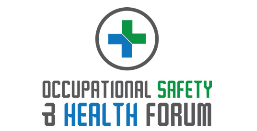The regulatory landscape for occupational safety in the UK continuously evolves – placing increasing pressure on health and safety leaders to maintain compliance across complex, multi-site operations. Whether managing risk assessments, incident reporting, training records or audits, selecting the right compliance management partner has become mission-critical.
With numerous solutions on the market – ranging from compliance software to regulatory consultancy services and e-learning providers – how can safety professionals make the right choice? Here’s a practical guide to evaluating partners based on cost, scalability, integration, and industry-specific requirements…
1. Understand Your Organisation’s Compliance Scope
Start by identifying your organisation’s unique compliance requirements. Are you managing a high-risk environment like construction or manufacturing? Or are you focused on legislative frameworks such as Health and Safety at Work Act compliance, RIDDOR reporting, or ISO 45001 certification?
Define the specific needs around:
✔ Incident reporting and investigation workflows
✔ Training and competency tracking
✔ Audit trails and document version control
✔ Risk assessments and workplace inspections
This baseline will help you assess whether a potential partner’s tools or services align with your day-to-day operational and regulatory demands.
2. Evaluating Compliance Software Providers
Modern compliance management platforms can streamline and centralise health and safety processes—but not all platforms are created equal. Look for:
✔ Scalability – Can the software handle multi-site or global operations as your business grows?
✔ Customisability – Does it offer templates and modules that fit your industry’s specific hazards and regulations?
✔ Integration – Can it connect with HR, facilities, or incident reporting systems to avoid data silos?
✔ Mobile functionality – Does it support real-time reporting from site using tablets or smartphones?
Cost is also a key consideration—opt for providers that offer clear, tiered pricing with support and updates included.
3. Choosing the Right Regulatory Consultant
Sometimes, software alone isn’t enough. A good compliance consultant can:
✔ Provide expert audits and gap analysis against UK health and safety laws
✔ Help develop risk mitigation strategies
✔ Deliver bespoke compliance roadmaps and support during HSE inspections
Look for consultants with relevant sector experience and professional accreditations, such as those registered with OSHEM or IIRSM.
4. Vetting Training and E-Learning Providers
Competency training is a core part of any compliance programme. Evaluate training providers based on:
✔ Course relevance and accreditation (e.g. IOSH, NEBOSH)
✔ Digital delivery and learning tracking
✔ Blended learning options for practical skills
Partners that offer automated learner tracking and refresher scheduling will make long-term compliance easier to manage.
Choosing the right compliance management partner means finding a solution that fits your sector, scales with your needs, and supports a proactive safety culture. By assessing providers across software, consultancy, and training, occupational safety leaders in can build a robust, integrated compliance framework that stands up to regulation and protects people and business alike.
Are you searching for health & safety Compliance solutions for your organisation? The Occupational Safety & Health Forum can help!
Photo by Christina @ wocintechchat.com on Unsplash





